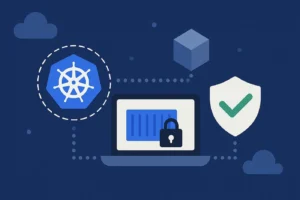Master these cloud computing challenges to achieve your business goals
Companies are adopting the public cloud in increasing numbers, with global end-user spending on public cloud services forecast to increase 20.4% in 2022. However, not everyone is experiencing the success they expected. Leveraging the cloud may be the single most critical IT action businesses can take to achieve their commercial objectives, but leaders are pursuing a moving target.
What started as a pure infrastructure play has become a multifaceted challenge that requires fundamental shifts not only in approaches to IT but in everything from company culture and financial management to security and data.
Lack of leadership buy-in
There is no point in proceeding with a cloud migration that does not have executive buy-in. To harness the cloud for true transformative value, you need to effect profound cultural change – something senior leaders will need to champion if it is to achieve its objectives. They will need to support cloud migration publicly and vocally, and develop an understanding of the benefits of cloud adoption that will enable them to educate and persuade all stakeholders.
To get to a position where your leaders are key advocates of your cloud efforts, you probably need to do some promotion of your own. Map out what will be involved to execute a successful company cloud strategy and tie it to clear business goals and deliverables. Understand that your managers may not necessarily be opposed to your specific cloud objectives; rather, they are rightly wary of any company-wide transformation that involves changes to IT operations, financial models and, indeed, the company’s entire culture.
However, without executive buy-in, you will not secure the kind of budget that allows you to create a cohesive cloud strategy for the company. Without an adequate budget, departments must strike out on their own, leading to disjointed efforts that are not tied to overall business goals and thereby set up to fail.
Framing the cloud as a purely tech play
Adopting a successful cloud-based model involves a paradigm shift that abandons half a century of ingrained IT practices in favor of a fundamentally new approach to driving productivity and value. For the transition to be smooth, it is vital not just to get your leadership on board but to implement change across the organization so you can put a robust foundation in place for all future cloud projects..
Operationalizing an environment for optimal use of the cloud is not simply a question of application architecture.: It requires a mindset that enables your company to function in a more agile, scalable and resilient way. Applications may need to be modified, retired, rebuilt or replaced, but changes go far beyond the tech environment:
Your organization will need to be amenable to change, well-informed on the process of cloud adoption or migration and equipped with adequate, appropriate data. Changing policies and methodologies based on key data is key, but implementing the kind of foundational change required can be challenging.
Losing control of costs
Many CFOs’ eyes lit up at the prospect of reduced IT costs presented by cloud’s pay-as-you-go consumption-based pricing model, but the switch from Capex (capital expenditure) to Opex (operating expenditure) involved in adopting the cloud model is no magic wand for costs. Indeed inefficient cloud spend is one of the major challenges of cloud computing, with organizations reporting that 32% of their cloud spend is wasted. Certainly, with proper cost optimization, cloud computing can bo more cost-effective than on-premises infrastructure strategies for many organizations, but costs can quickly spin out of control without proper monitoring.
When those costs begin to overtake the revenue growth they are intended to cultivate, your organization has a problem. The problem often stems from poor visibility into how cloud instances and services are used, so your first step to controlling your cloud spending is to gain a strong understanding of how your team uses cloud resources and how planned architecture and infrastructure changes will influence future spending.
Equipped with this information, you can drive efforts to create a sense of accountability for cloud costs among your team members. Given that your team probably would prefer to waste less but does not have the time to forensically track each cent spent, automation is helpful in identifying problems causing unnecessary spending and resolving those issues as soon as they arise. A product like DoiT Flexsave could prove invaluable, automating cloud cost optimization in a way that allows you to generate maximum savings with minimal effort.
Not prioritizing cloud security
Security must be built into the foundation of any cloud project. This security-by-design approach means developers and stakeholders including information security, risk management and IT operations work to minimize potential data breaches and vulnerabilities using a range of controls and processes to enhance cybersecurity. Responsibility for specific security tasks is clearly understood, so if something goes wrong, it can be resolved quickly.
Rather than simply slapping a security policy on top of your cloud strategy, take security into consideration from the very beginning and incorporate security best practices into each step. Using short iterations supported with automation, it is possible to address and remediate monitoring and security issues quickly.
Customers should also understand the shared responsibility model that underpins cloud security. Cloud service providers are responsible for what they control, which is mainly the elements that make up the service infrastructure components. It is up to the customer to manage other security aspects, such as deploying, maintaining and enforcing security measures. It is important to research best practices for your specific cloud provider and understand your security responsibilities.
Failing to harness data effectively
Most companies are only scratching the surface of what the cloud can do. When leveraged correctly, data captured using cloud technology can be transformative, delivering previously unimaginable insights for ambitious businesses. Analyzed correctly, it can enable enhanced customer engagement, increased employee productivity, improved uptime and streamlined operations.
However, data on its own does not generate value. It must be processed, analyzed and understood, and many organizations are simply not leveraging the vast amounts of data their cloud-driven systems are generating. Instead of digital transformation, they are experiencing a data deluge, which is flooding their ecosystems, creating greater complexity than ever and increasing costs without an accompanying rise in value.
When your organization’s data is organized and made centrally accessible, it can be harnessed to generate business improvements like faster responses to service interruptions and enhanced service offerings for customers.
Misunderstanding dependencies
One of the biggest challenges of cloud computing is understanding application dependencies. Most of your existing applications will be integrated with and reliant on other applications in your IT environment. Before you move anything in the cloud, you need to assess where the connections and dependencies are and which services those dependencies affect.
Mapping these relationships is notoriously difficult to do, particularly in a rapidly evolving environment – but the consequences of getting it wrong are grave. You risk disrupting the functionality of the services these interconnected applications deliver, and you could introduce unacceptable latencies by creating dependency bottlenecks.
Application mapping can be done in a variety of ways, ranging from manual to fully automated. It identifies interdependencies across on-premises, Software-as-a-Service and cloud assets and allows you to determine which applications within the service can be migrated. You can then make informed decisions about what to migrate and when. With 53% of companies reporting app dependencies as their key cloud migration challenge, it makes sense to rely on an expert partner to help you get a granular view.
Supporting successful cloud outcomes
It can be difficult for organizations to figure out how to deliver on the promise of the public cloud without running up excessive costs. DoiT has helped hundreds of fast growing, digitally savvy companies around the world to leverage public cloud technology and services to achieve big goals. Whether you need access to an advanced technology portfolio or deep multicloud expertise, relying on a cloud partner is one way to avoid the pitfalls of the cloud and embrace its potential.



